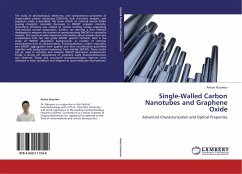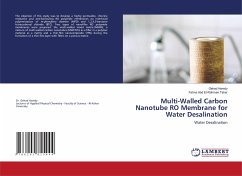
Spectroscopy of Individual Single-Walled Carbon Nanotubes
and their Synthesis via Chemical Vapor Deposition
Versandkostenfrei!
Versandfertig in 6-10 Tagen
53,99 €
inkl. MwSt.

PAYBACK Punkte
27 °P sammeln!
A thermal chemical vapor deposition (CVD) reactor was built and used to grow vertically and horizontally aligned carbon nanotube arrays. The as-grown nanotubes were investigated on a single tube level using near-infrared photoluminescence (PL) microscopy and PL excitation spectroscopy as well as Raman, atomic force and scanning electron microscopy. The PL of single-walled carbon nanotubes (SWNT) in different surroundings and at temperatures down to 4 K was analyzed. Ultralong CVD-grown nanotubes were imaged on Si/SiO2 to determine their chirality and to check structural integrity along the nan...
A thermal chemical vapor deposition (CVD) reactor was built and used to grow vertically and horizontally aligned carbon nanotube arrays. The as-grown nanotubes were investigated on a single tube level using near-infrared photoluminescence (PL) microscopy and PL excitation spectroscopy as well as Raman, atomic force and scanning electron microscopy. The PL of single-walled carbon nanotubes (SWNT) in different surroundings and at temperatures down to 4 K was analyzed. Ultralong CVD-grown nanotubes were imaged on Si/SiO2 to determine their chirality and to check structural integrity along the nanotube length. Furthermore, ultralong SWNTs were manipulated (moved, bent and fractured) employing an AFM. Finally, a new approach to determine relative abundances and PL quantum yields of semiconducting SWNTs in dispersions is presented, which is based on statistical counting of individual nanotubes by means of PL spectroscopy.












